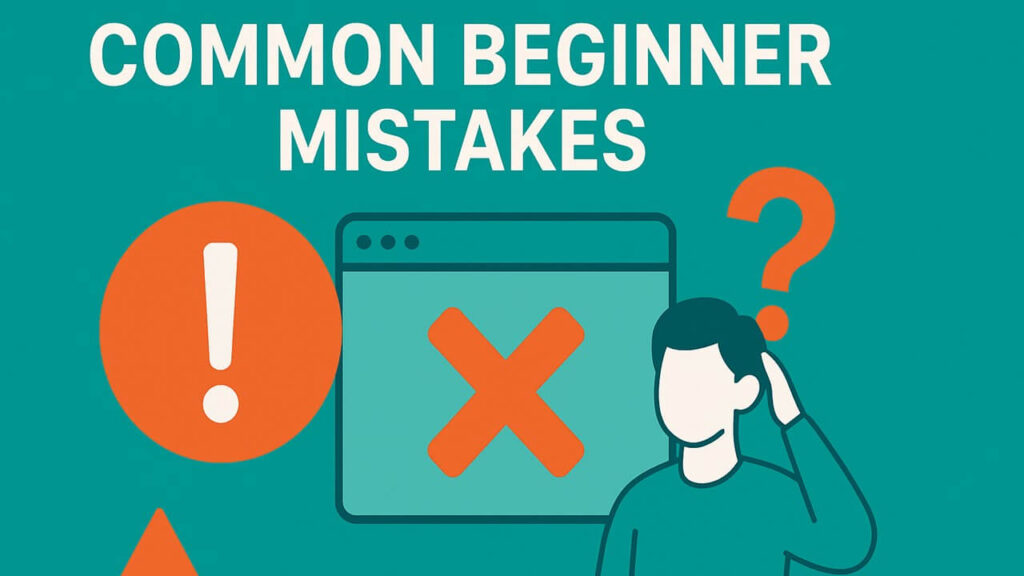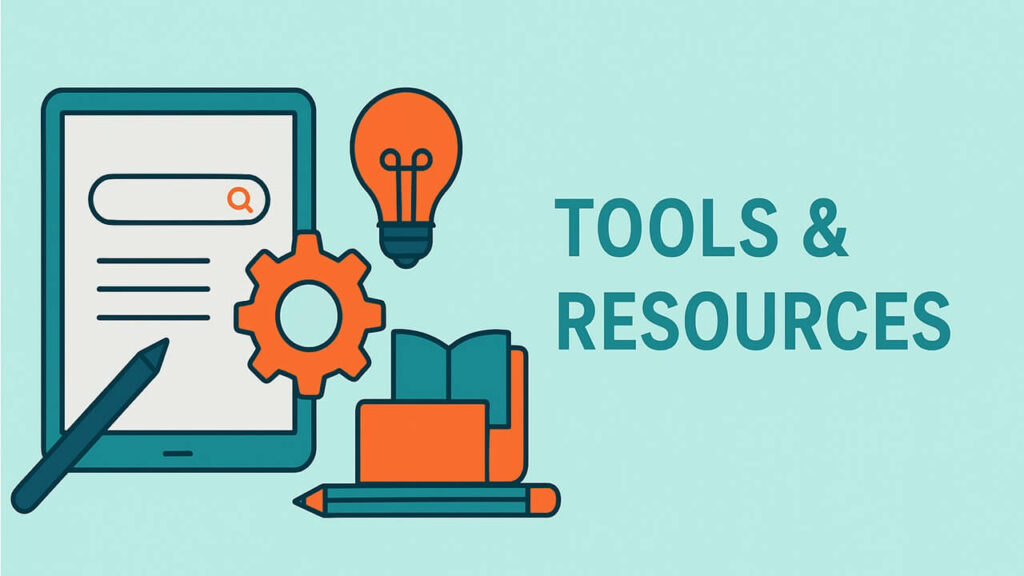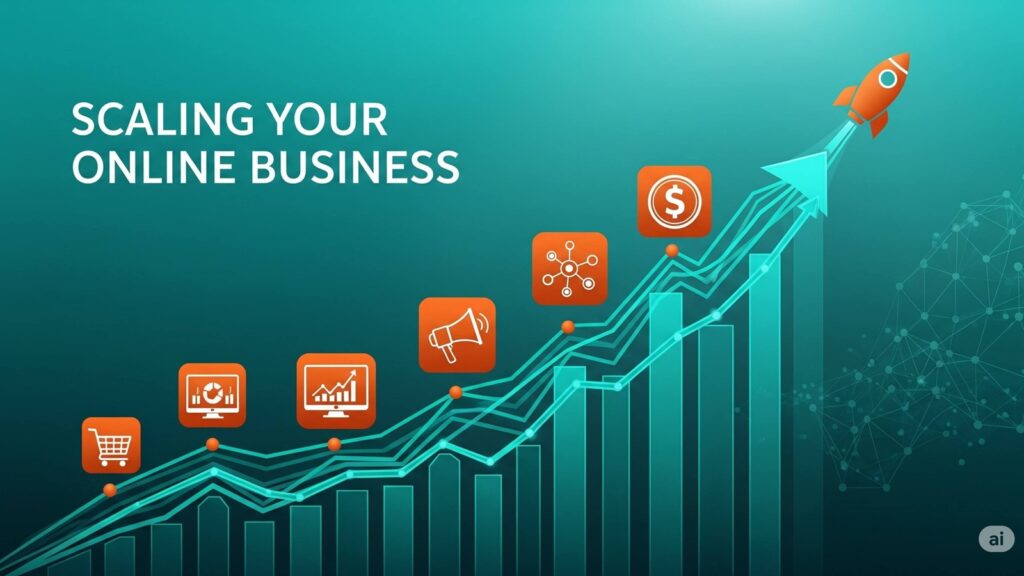Starting an online business has never been more accessible than it is today. With global e‑commerce sales projected to exceed $6.8 trillion in 2025, the digital economy presents unprecedented opportunities for aspiring entrepreneurs. For those wondering how to start an online business, the barriers to entry are lower than traditional brick‑and‑mortar ventures — but success still requires careful planning, strategic execution, and realistic expectations.
This comprehensive guide will walk you through every essential step of launching your online business, from initial idea validation to securing your first customers. Whether you’re looking to escape the 9‑to‑5 grind, supplement your income, or build the next digital empire, this article serves as your roadmap to online entrepreneurship success.
How to Start an Online Business: Setting Realistic Expectations for Success

Before diving into the tactical steps, it’s crucial to understand the reality of online business. While the internet has created incredible success stories, it’s also littered with failed ventures built on unrealistic expectations.
The Success Rate Reality
The statistics might seem sobering: research shows that 80-90% of online businesses fail within their first 120 days. However, these failures aren’t due to lack of opportunity—they’re primarily caused by preventable mistakes like insufficient market research, poor planning, and unrealistic expectations about “quick riches”.
The most successful online business models show significantly better success rates. Local lead generation boasts a 35% success rate, online courses achieve 25%, and print-on-demand reaches 24%. These higher success rates share common factors: lower barriers to entry, recurring revenue potential, and scalable business models.
Debunking the “Overnight Success” Myth
Despite what social media might suggest, sustainable online businesses take time to build. Even Amazon, now a trillion-dollar company, didn’t turn a profit until 2003—nine years after its founding. The key is building systems and processes that compound over time, not chasing overnight riches.
Modern entrepreneurs have significant advantages their predecessors didn’t: advanced AI tools, sophisticated marketing platforms, and access to global markets from day one. However, success still requires dedication, consistent effort, and strategic thinking.
Business Idea Generation & Validation: Finding Your Profitable Niche
The foundation of any successful online business is a validated idea that solves real problems for real people. This section will guide you through identifying opportunities and testing their viability before you invest significant time and money.
Identifying Market Opportunities

Trend Analysis and Market Research
Start by examining growing markets and emerging trends. The most profitable online business opportunities for 2025 include:
- Digital Products and Services: E-books, online courses, templates, and digital tools have minimal overhead and high profit margins
- E-commerce and Dropshipping: Physical products sold online, either through your own inventory or dropshipping arrangements
- Service-Based Businesses: Consulting, freelancing, virtual assistance, and digital marketing services
- Subscription Models: Recurring revenue businesses that provide ongoing value to customers
Finding Your Unique Angle
Rather than competing in oversaturated markets, look for underserved niches or unique angles on existing problems. Consider your own expertise, interests, and network. The most successful online businesses often combine the founder’s existing knowledge with market demand.
Validating Your Business Idea

The Smoke Test Method
Before building anything, validate demand using the “smoke test” approach. Create a simple landing page describing your product or service, then drive traffic through paid ads or organic marketing. If people sign up for a waitlist or pre-order, you’ve validated interest.
Five-Step Market Validation Process
- Write Down Goals and Hypotheses: Clearly articulate what problem you’re solving, for whom, and why your solution is unique
- Conduct Customer Research: Interview 10-20 potential customers to understand their pain points and willingness to pay
- Analyze Competition: Study existing solutions and identify gaps in the market
- Test Minimum Viable Product (MVP): Create the simplest version that delivers core value
- Measure and Iterate: Use feedback to refine your offering before full launch
Market Research Tools and Techniques
- Google Trends: Analyze search volume and interest over time
- Keyword Research: Use tools like Google Keyword Planner to understand search demand
- Social Media Listening: Monitor discussions in relevant Facebook groups, Reddit communities, and LinkedIn forums
- Survey Tools: Platforms like Google Forms make it easy to gather structured feedback
Essential Business Planning: Creating Your Roadmap to Success

A solid business plan transforms your idea into an actionable strategy. While online businesses can pivot quickly, having a foundation plan helps you make informed decisions and track progress.
Core Business Plan Elements
Executive Summary and Value Proposition
Your value proposition should clearly articulate the unique value you provide and why customers should choose you over alternatives. This becomes the foundation for all your marketing and sales efforts.
Market Analysis and Customer Personas
Develop detailed profiles of your ideal customers, including demographics, behaviors, pain points, and purchasing patterns. This information guides everything from product development to marketing messaging.
Revenue Model and Financial Projections
Choose the business model that best fits your market and capabilities:
- One-time Sales: Traditional transaction-based model
- Subscription: Recurring revenue with predictable cash flow
- Affiliate Marketing: Earn commissions promoting other companies’ products
- Freemium: Free basic service with paid premium features
Choosing Your Business Structure
Business Entity Options
The legal structure you choose affects taxes, liability, and operational complexity:
- Sole Proprietorship: Simplest structure, suitable for single-person businesses
- Partnership: For businesses with multiple owners sharing profits and responsibilities
- Limited Liability Company (LLC): Provides liability protection while maintaining operational flexibility
- Corporation: Most complex but offers maximum protection and growth potential
Registration Requirements
Most online businesses require basic registration and compliance:
- Business Registration: Register with appropriate government authorities
- Tax Registration: Obtain necessary tax identification numbers
- Licenses and Permits: Industry-specific requirements vary by location and business type
Building Your Online Presence: Establishing Your Digital Foundation

Your online presence is your business’s face to the world. This includes your website, social media profiles, and overall brand identity.
Domain and Hosting Setup
Choosing Your Domain Name
Your domain name should be memorable, relevant to your business, and easy to spell. Consider these factors:
- Keep it short and simple
- Use .com when possible for maximum credibility
- Avoid hyphens and numbers that cause confusion
Selecting a Hosting Provider
Choose hosting based on your technical requirements and budget:
- Shared Hosting: Cost-effective for beginners with low traffic
- VPS Hosting: More control and resources for growing businesses
- Cloud Hosting: Scalable solution that grows with your business
Essential Setup Steps
- Purchase your domain from a reputable registrar
- Set up hosting with SSL certificates for security
- Configure DNS settings to connect domain and hosting
- Install necessary software (WordPress, e-commerce platforms)
Website Creation and Optimization
Platform Selection
Choose a platform that matches your technical skills and business needs:
- WordPress: Most flexible, suitable for all business types
- Shopify: Optimized for e-commerce with built-in payment processing
- Wix/Squarespace: User-friendly drag-and-drop builders for simple sites
Essential Website Elements
- Professional design that reflects your brand
- Mobile optimization (over 70% of users shop on mobile devices)
- Fast loading speeds to reduce bounce rates
- Clear navigation and intuitive user experience
- Contact information and professional email addresses
Basic Branding and Visual Identity
Brand Development Fundamentals
Your brand is more than just a logo—it’s the complete experience customers have with your business. Key branding elements include:
- Brand Values: What you stand for and believe in
- Voice and Tone: How you communicate with customers
- Visual Identity: Colors, fonts, and imagery that represent your brand
- Brand Promise: The value you consistently deliver
DIY Branding Tools
Several affordable tools help create professional branding:
- Canva: Templates for logos, social media graphics, and marketing materials
- Figma: Professional design tool for more complex branding projects
- Google Fonts: Free, professional fonts for consistent typography
Financial Foundations: Managing Money and Growth

Proper financial management is crucial for online business success. This includes setting up business banking, implementing accounting systems, and understanding funding options.
Business Banking and Accounting Setup
Opening a Business Bank Account
Separate your business and personal finances from day one. Business banking offers several advantages:
- Professional credibility with customers and suppliers
- Simplified tax preparation and financial tracking
- Access to business credit and financing options
- Legal protection by maintaining corporate separation
Accounting Software Selection
Choose accounting software that scales with your business:
- QuickBooks: Industry standard with comprehensive features
- Vyapar: Popular choice for Indian businesses with GST compliance
- Wave: Free option suitable for small businesses
- Xero: Cloud-based solution with strong integration capabilities
Essential Financial Tracking
Monitor these key metrics from the beginning:
- Revenue and profit margins
- Customer acquisition cost (CAC)
- Customer lifetime value (CLV)
- Cash flow and burn rate
- Monthly recurring revenue (for subscription businesses)
Understanding Funding Options
Bootstrapping Strategies
Most successful online businesses start by bootstrapping—funding growth through revenue rather than external investment. Strategies include:
- Starting with minimal viable products to test markets quickly
- Reinvesting profits into growth rather than taking large salaries
- Using freelancers and contractors instead of full-time employees initially
Alternative Funding Sources
As your business grows, consider additional funding options:
- Small business loans from banks or online lenders
- Government grants and startup programs
- Angel investors for high-growth potential businesses
- Crowdfunding for consumer products with broad appeal
Legal & Compliance Basics: Protecting Your Business

Understanding legal requirements protects your business and builds customer trust. While requirements vary by location and industry, certain fundamentals apply to most online businesses.
Registration and Licensing Requirements
Business Registration Process
The registration process typically involves:
- Choosing and reserving your business name
- Filing incorporation documents with relevant authorities
- Obtaining required licenses and permits based on your industry
- Registering for taxes (Taxes depending on location)
Industry-Specific Requirements
Certain business types have additional requirements:
- Food businesses: Food safety certifications and labeling requirements
- Financial services: Licensing and compliance with financial regulations
- Healthcare: HIPAA compliance and professional licensing
- International sales: Export/import licenses and customs requirements
Tax Considerations and Compliance
Understanding Tax Obligations
Online businesses must comply with various tax requirements:
- Income tax on business profits
- Sales tax on products sold (varies by jurisdiction)
- Employment taxes if you have employees
- International tax implications for cross-border sales
Record Keeping and Documentation
Maintain detailed records for tax compliance and business analysis:
- All business income and expense receipts
- Bank statements and financial transactions
- Customer and supplier information
- Business registration and licensing documents
Website Legal Requirements
Essential Legal Pages
Most online businesses need these legal documents:
- Privacy Policy: Required by law in many jurisdictions, explains data collection practices
- Terms of Service: Defines the relationship between your business and customers
- Refund/Return Policy: Builds customer confidence and meets legal requirements
- Cookie Policy: Required in EU and many other jurisdictions
Data Protection Compliance
Modern businesses must comply with data protection regulations:
- GDPR (European Union): Strict requirements for businesses handling EU customer data
- CCPA (California): Privacy rights for California residents
- Local data protection laws: Vary by country and region
Marketing & Launch Strategy: Attracting Your First Customers

Marketing transforms your business from an idea into a revenue-generating reality. Modern digital marketing offers unprecedented targeting capabilities and measurable results.
Digital Marketing Fundamentals
Search Engine Optimization (SEO)
SEO helps potential customers find your business when they search for solutions online:
- Keyword Research: Identify terms your customers use to find solutions
- On-Page Optimization: Optimize website content for search engines
- Content Marketing: Create valuable content that attracts and engages customers
- Local SEO: Optimize for location-based searches if relevant
Social Media Marketing
Social media platforms offer direct access to your target audience:
- Platform Selection: Choose platforms where your customers spend time
- Content Strategy: Mix educational, entertaining, and promotional content
- Community Building: Engage with followers and build relationships
- Paid Advertising: Use targeted ads to reach specific demographics
Email Marketing
Email remains one of the highest ROI marketing channels:
- List Building: Offer valuable content in exchange for email addresses
- Segmentation: Group subscribers based on interests and behaviors
- Automation: Set up email sequences for nurturing leads
- Performance Tracking: Monitor open rates, click rates, and conversions
Customer Acquisition Strategies
Content Marketing Approach
Create valuable content that attracts potential customers:
- Blog Posts: Address common questions and problems in your industry
- Video Content: Tutorials, product demonstrations, and behind-the-scenes content
- Podcasts: Build authority and reach new audiences
- Free Resources: Templates, guides, and tools that demonstrate your expertise
Paid Advertising Fundamentals
Paid advertising can accelerate customer acquisition:
- Google Ads: Target customers actively searching for solutions
- Facebook/Instagram Ads: Leverage detailed demographic and interest targeting
- LinkedIn Ads: Effective for B2B businesses and professional services
- YouTube Ads: Video advertising for visual products and services
Partnership and Referral Programs
Leverage existing networks and relationships:
- Affiliate Marketing: Pay others to promote your products
- Strategic Partnerships: Collaborate with complementary businesses
- Customer Referral Programs: Incentivize existing customers to refer others
- Influencer Collaborations: Work with relevant influencers to reach new audiences
Launch Planning and Execution
Pre-Launch Activities
Build momentum before your official launch:
- Beta Testing: Get feedback from early users to refine your offering
- Content Creation: Develop launch announcement materials
- Email List Building: Collect interested prospects before launch
- Press Preparation: Prepare press releases and media kits
Launch Day Strategy
Coordinate activities for maximum impact:
- Social Media Announcements: Share across all platforms simultaneously
- Email Campaign: Notify your email list about the launch
- Press Outreach: Contact relevant media and bloggers
- Customer Support: Be ready to handle questions and issues
Common Beginner Mistakes: What to Avoid and How to Succeed

Learning from others’ mistakes can save you time, money, and frustration. Here are the most common pitfalls new online business owners encounter and how to avoid them.
Planning and Strategy Mistakes
Lack of Market Research
The most common reason online businesses fail is building something nobody wants. Avoid this by:
- Validating demand before building products
- Understanding your competition and market dynamics
- Testing pricing and value propositions with real customers
- Starting small and scaling based on proven demand
Unrealistic Expectations
Many entrepreneurs expect immediate results and give up too early:
- Set realistic timelines for growth and profitability
- Plan for lean periods and ensure adequate cash flow
- Focus on building systems rather than seeking quick wins
- Measure progress with meaningful metrics, not vanity numbers
Technical and Operational Errors
Poor Website User Experience
Your website is often the first impression customers have of your business:
- Ensure mobile optimization for all devices and screen sizes
- Optimize loading speeds to reduce bounce rates
- Simplify navigation to help users find what they need
- Test payment processes to eliminate friction in purchasing
Inadequate Business Systems
Lack of proper systems causes problems as you scale:
- Implement customer support systems from the beginning
- Use project management tools to stay organized
- Set up analytics to track performance and identify issues
- Create standard operating procedures for repeatable tasks
Marketing and Customer Acquisition Pitfalls
Spreading Too Thin
Trying to be everywhere at once reduces effectiveness:
- Focus on 1-2 marketing channels initially and master them
- Understand your customer journey before diversifying efforts
- Measure ROI on all marketing activities
- Build expertise in channels that work for your business
Neglecting Customer Retention
Acquiring new customers costs 5-10 times more than retaining existing ones:
- Develop customer retention strategies from launch
- Provide excellent customer service to build loyalty
- Create loyalty programs and repeat purchase incentives
- Stay connected through email marketing and social media
Tools & Resources: Essential Platforms and Software for Beginners

The right tools can dramatically improve your efficiency and professional appearance. Here’s a curated list of essential tools organized by function, with free and affordable options for beginners.
Website and E-commerce Platforms
Website Builders
- WordPress: Most flexible platform with thousands of themes and plugins
- Shopify: Purpose-built for e-commerce with integrated payment processing
- Wix: User-friendly drag-and-drop builder with professional templates
- Squarespace: Beautiful designs with built-in marketing tools
E-commerce Solutions
- WooCommerce: WordPress plugin for adding e-commerce functionality
- BigCommerce: Scalable platform for growing online stores
- Etsy: Marketplace for handmade and creative products
- Amazon FBA: Leverage Amazon’s fulfillment network
Marketing and Customer Management Tools
Email Marketing Platforms
- Mailchimp: User-friendly with free plan for small lists
- ConvertKit: Designed for creators and content marketers
- ActiveCampaign: Advanced automation and segmentation features
- Constant Contact: Good for beginners with excellent customer support
Social Media Management
- Buffer: Schedule posts across multiple platforms
- Hootsuite: Comprehensive social media management suite
- Canva: Create professional graphics and social media content
- Later: Visual content calendar for Instagram and other platforms
Customer Relationship Management (CRM)
- HubSpot: Free CRM with sales and marketing tools
- Salesforce: Industry-leading CRM for larger businesses
- Pipedrive: Simple, visual sales pipeline management
- Zoho CRM: Affordable option with extensive customization
Business Operations and Productivity
Project Management
- Trello: Visual project management with boards and cards
- Asana: Comprehensive project and team management
- Monday.com: Flexible work operating system
- ClickUp: All-in-one productivity and project management
Communication and Collaboration
- Slack: Team messaging and collaboration platform
- Microsoft Teams: Integrated communication and file sharing
- Zoom: Video conferencing and webinar platform
- Google Workspace: Email, documents, and productivity suite
Financial Management
- QuickBooks: Comprehensive accounting software
- FreshBooks: Simple invoicing and time tracking
- Wave: Free accounting software for small businesses
- Xero: Cloud-based accounting with strong integrations
Analytics and Optimization Tools
Website Analytics
- Google Analytics: Free, comprehensive website analytics
- Google Search Console: Monitor search performance and technical issues
- Hotjar: Heatmaps and user behavior analysis
- Mixpanel: Advanced event tracking and user analytics
SEO and Content Tools
- SEMrush: Comprehensive SEO and competitive analysis
- Ahrefs: Backlink analysis and keyword research
- Yoast SEO: WordPress plugin for on-page optimization
- Google Keyword Planner: Free keyword research tool
Next Steps & Growth: Scaling Your Online Business

Once you’ve established your online business foundation, focus shifts to growth and optimization. This section outlines strategies for scaling sustainably while maintaining quality and customer satisfaction.
Measuring Success and Key Performance Indicators (KPIs)
Financial Metrics
Track these essential financial indicators:
- Monthly Recurring Revenue (MRR): For subscription businesses
- Customer Acquisition Cost (CAC): How much you spend to acquire each customer
- Customer Lifetime Value (CLV): Total revenue from an average customer
- Gross and Net Profit Margins: Profitability at different levels
- Cash Flow: Money coming in versus going out
Operational Metrics
Monitor operational efficiency with:
- Website traffic and conversion rates
- Email open rates and click-through rates
- Social media engagement and follower growth
- Customer satisfaction scores and retention rates
- Order fulfillment times and return rates
Scaling Strategies and Growth Planning
Automation and Systematization
Implement systems that allow growth without proportional increases in workload:
- Email marketing automation for nurturing leads and customers
- Customer service chatbots for handling common questions
- Social media scheduling tools for consistent content
- Inventory management systems for e-commerce businesses
Team Building and Delegation
Plan for team expansion as you grow:
- Virtual assistants for administrative tasks
- Freelancers for specialized projects
- Part-time employees for customer service and operations
- Full-time hires when workload justifies the expense
Market Expansion Opportunities
Consider these growth vectors:
- New product lines that complement existing offerings
- Geographic expansion to new markets and regions
- New customer segments with modified marketing approaches
- Partnership opportunities for mutual growth
Long-term Business Development
Building Strategic Partnerships
Partnerships can accelerate growth and provide new opportunities:
- Supplier relationships for better pricing and terms
- Distribution partnerships for reaching new markets
- Technology partnerships for enhanced capabilities
- Co-marketing agreements for shared audience access
Investment and Funding Considerations
As your business grows, consider external funding:
- Revenue-based financing that scales with your income
- Small business loans for equipment and expansion
- Angel investment for high-growth potential businesses
- Venture capital for businesses ready for rapid scaling
Exit Strategy Planning
Even early-stage businesses should consider long-term objectives:
- Lifestyle business: Optimize for personal freedom and income
- Growth business: Scale for maximum valuation and eventual sale
- Legacy business: Build something to pass to next generation
- Portfolio approach: Use success to fund additional ventures
Key Takeaways and Your Next Steps
Starting an online business in 2025 offers unprecedented opportunities, but success requires strategic planning, consistent execution, and realistic expectations. The digital economy continues to grow, with e-commerce sales projected to reach $8 trillion by 2027, creating enormous opportunities for new entrepreneurs.
Essential Success Factors
Remember these critical elements for online business success:
- Validate before you build: Test market demand before investing significant resources
- Start lean and iterate: Begin with a minimal viable product and improve based on customer feedback
- Focus on customer value: Build products and services that solve real problems for real people
- Invest in marketing: Even the best products need effective marketing to reach customers
- Plan for the long term: Sustainable businesses are built over months and years, not days and weeks
Your Immediate Action Plan
Take these steps to begin your online business journey:
- Complete market research for your business idea using the validation framework provided
- Create a simple business plan outlining your value proposition, target market, and revenue model
- Register your business and obtain necessary licenses and permits
- Set up your online presence with a professional website and social media profiles
- Launch your minimum viable product and start gathering customer feedback
Resources for Continued Learning
Online business success requires continuous learning and adaptation. Stay current with industry trends, platform changes, and new marketing opportunities. Join relevant communities, follow industry leaders, and invest in your ongoing education.
The barriers to starting an online business have never been lower, but the potential for success has never been higher. With proper planning, strategic execution, and persistence, your online business can provide the freedom, income, and impact you’re seeking.
Your journey as an online entrepreneur starts with a single step. Take that step today, and begin building the business that will transform your life and serve your customers for years to come.
This guide represents current best practices and requirements as of 2025. Always consult with legal and financial professionals for advice specific to your situation and location.
